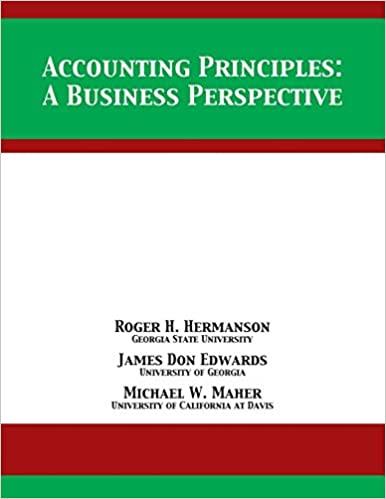DISCUSSION QUESTIONS 1:4-1 1:4-2 1:4-3 1:4-4 1:4-5 What is meant by the terms administrative exclu- sion and judicial exclusion? There is no specific statutory exclusion for wel- fare benefits. Nevertheless, the IRS has ruled that such benefits are not taxable. Is this within the authority of the IRS? What was the issue in the tax case Eisner v. Macomber? Why is the case important? Most exclusions exist for one of two reasons. What are those reasons? Give examples of exclu- sions that exist for each. a. If a gift of property is made, who is taxed on income produced by the property? b. How can interfamily gifts reduce a family's total tax liability? a. What role does intent play in determining whether a transfer is a gift and therefore not subject to the income tax? b. Are tips received by employees from customers excludable from gross income as gifts? Explain. What is the tax significance of the face amount of a life insurance policy? What conditions must be met for an award to qualify for an exclusion under Sec. 74? Which of the requirements for the Sec. 74 awards exclusion most severely limits its use? Does the exclusion benefit taxpayers more if they itemize their deductions or use the standard deduction? 1:4-6 1:4-7 1:4-8 1:4-9 1:4-11 1:4-12 1:4-13 What special rules are applicable to non-degree candidates who receive scholarships? Is the personal injury exclusion found in Sec. 104 limited to physical injury? Explain. Answer the following questions relative to employer-financed medical and health, disability, and life insurance plans. a. May employers deduct premiums paid on em- ployee insurance? b. Do employees have to include such premiums in gross income? c. Are benefits paid to the employee included in the employee's gross income? Special rules are applicable in situations where group term life insurance coverage exceeds $50,000. How are key employees treated? a. What are the seven major types of fringe ben- efits covered by Sec. 132? b. What tax advantage is offered relative to such benefits? c. Are such benefits available to employees only or may the benefits also be offered to spouses, dependents, and retirees? d. Is discrimination prohibited relative Sec. 132 benefits? e. What is the tax impact on the employer and employees if an employer's plan is discriminatory? 1:4-14 1:4-15 to








